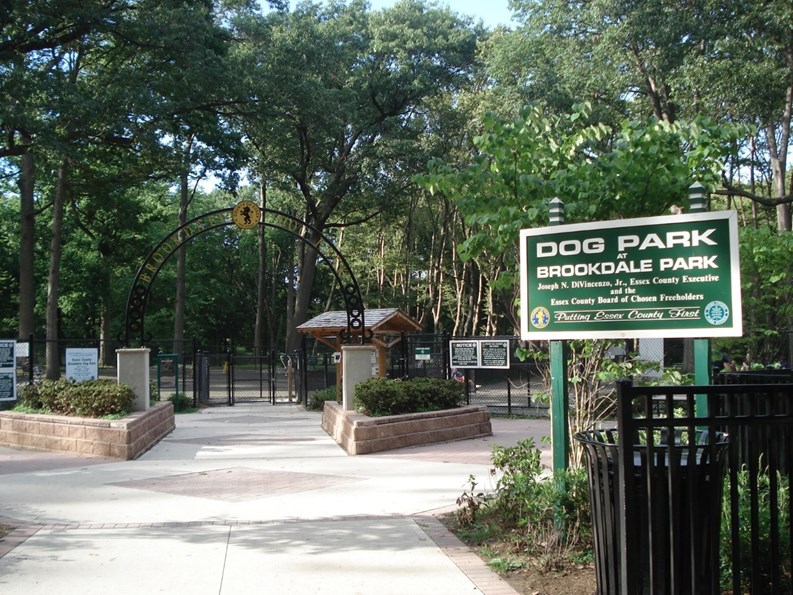It’s no secret that New Jerseyans love their dogs. Colin Campbell, New Jersey’s deputy state public health veterinarian estimates that there are 500,000 dogs in the Garden State, so it’s no wonder businesses and city dwellings are jumping on the dog-service bandwagon.
If you're the proud owner of a noble hound, you know what an important part our canine counterparts play in both day-to-day and larger life decisions we make. Where to live? Why to live there? And with more and more, What’s in it for Fido? The easier a condo, co-op or HOA can make it on dog owners to care for their pooches given the hectic pace we all live, the more attractive the community. So the 31 off-leash dog runs located across New Jersey (doggeek.com) may play a large role in the demographic of the surrounding buildings.
If You Will Build It, They Will ...Come
A sure-fire way to attract this market-share is to develop near city green spaces that have existing or the potential to create dog friendly off-leash areas. New Jersey has leash laws which require dogs to be leashed at all times with the exception of designated areas. These areas have taken the form of dog runs.
One of the first dog runs appeared in New Jersey in Essex County’s Watsessing Park. The idea for the dog park arose during a parks tour held by Essex County Executive Joseph N. DiVincenzo Jr., to hear citizens’ input. When the 19,500-square-foot off the leash facility opened in 2004, it boasted a stone dust surface, park benches, water fountains for pets and owners and DogiPot stations with bags and waste receptacles. The dual entrance gate system assured pet owners that their dogs could enter the facility without running away.
The facility was constructed in partnership with the federal Environmental Protection Agency and was built at no cost to the county of Essex.
Site location is an essential element for a successful, popular dog run, says James Howard, coordinator of design at the County College of Morris in Randolph, who designed the Morris County Central Park Canine Activity Center and Dog Park in Parsippany.
“Essentially all dog runs share in the common goal to promote play and health for the dog. It should encourage exercise and fun,” says Howard. “But if the run is exposed to a lot of sun, then you’ll want to incorporate a portion of the run to be covered for shade. A run should have excellent drainage and discourage rain water runoff and assures the safe and secure housing of the dog.”
Designing dog runs now necessitates consideration for the dog owners as well as the dog. In urban areas especially human socialization plays a large a role in a successful dog run. Many dog runs now have vestibule-type entrances. This is a double opening where one gate opens by either sliding or swinging out so that it may be closed before entering the area where the dogs are.
Howard’s design for a canine complex in Parsippany, New Jersey features separate entrances for large and small dogs and separate activities for each size. The run also has a shade tree oasis, a dog water fountain, lots of benches, a paving stone patio and visitor’s kiosk, and a fenced in “doggie time-out area” for disobedient canines. His ideas were shaped by research based on dog parks in the Garden State communities of Denville, Roxbury and Randolph as well as across the Northeast.
Dogs’ Rules
“There are always one or two dogs misbehaving,” says Howard. “The ‘time-out’ area is something that’s offered by no other parks around here that I know of. This park features the best of what’s being offered at other dog parks as well as what should be offered.”
“One of the first things to consider when designing a dog park is the size and characteristic of the dog,” says Howard. “For example, if the dog is a digger and the run is erected on grass or soil, then you’ll want to incorporate a durable liner or pavers. A designer also must consider the terrain, and whether the run will be a freestanding structure or be erected as an extension of the present infrastructure.”
The off-the-leash facility opened in August 2011 and has become a popular destination dog park for area residents, and officials say there has been a great response.
The turf used in dog runs is also a key ingredient. Paw-friendly crushed stone or sand seems to be the choice du jour, but asphalt covered in a painted-on material called 'sports coat' is used in some parks. The crushed stone option is a safe material that doesn’t turn into mud when wet and is comfortable for the animals to play on but it does need to be raked and evened out on a regular basis. The asphalt is virtually maintenance-free, with the exception of an occasional power wash.
A common turf-choice misstep among early dog run designs was the use of mulch or wood chips. This material can prove costly as it needs to be replaced often thanks to enthusiastic dogs kicking the material outside the fence and exposing the bare surface underneath.
“A dog run shouldn’t be built if you merely want to use it as a way to have the dog out of your hair,” says Howard. “Though the run can allow the pet owner a little down time, it should not be constructed as a daylong holding tank for the dog, keeping him isolated from the family.”
Most urban dog runs now offer at least one area where running water is available, although some of the larger and more popular runs have a few stations. These areas are there not only to help keep the dogs clean, cool and hydrated but also supplement maintenance and cleanup efforts. Depending upon the type of turf in the run as well as access to water, hosing down the area in the evenings a couple times a week can assist in keeping things looking their best.
Paul W. Ferriero, president of Ferriero Engineering in Chester and designer of the River Road Park and Burnt Mills Road dog runs in Bedminster Township, says one of the most important elements in the design of a successful dog run is its location. “The area should be relatively flat and not wooded,” says Ferriero. “It should also have good access and parking. It should be relatively isolated. “Too close to neighbors will result in complaints from the dog noise. Too close to active playgrounds and ball fields could result in the dogs wanting to join that play instead of their own.”
Keeping a well-maintained dog run is important to all who want to enjoy the park. “People won’t bring their dogs to a messy place,” says Ferriero “It’s important to have adequate facilities to deal with waste. Lots of trash cans and bag dispensers should be on site.”
Where possible, sheds or storage bins are helpful in the clean up effort as far as access and having the tools right there. Something large enough for rakes, shovels, garbage bags and various hose attachments generally do the trick.
Keep It Clean
Pet owners should also remember to clean up after their animals and perform necessary maintenance. Most dog parks even offer free disposal bags. Aside from the obvious daily maintenance, urban dog parks are remarkably maintenance-free. Clearing leaves in the fall and snow in the winter from the inside the fenced area is really the only seasonal concern.
At the end of the day, dog owners are drawn to these spaces so their pets can have some valuable off-leash fun and exercise each day. Like their human counterparts, dogs want to socialize, have fun and play and dog runs are outlets for them to do just that in a safe, well monitored environment.
David Garry is a freelance writer and a frequent contributor to The New Jersey Cooperator. Staff Writer Christy Smith-Sloman contributed to this article.







Leave a Comment